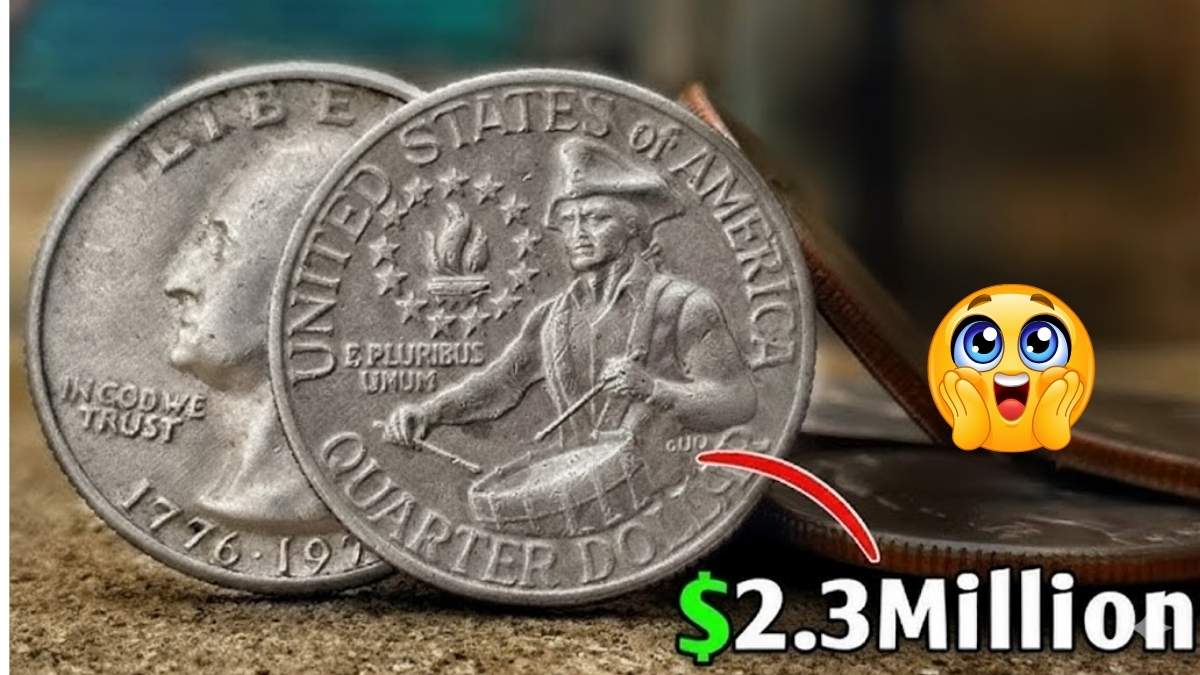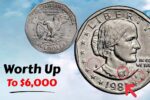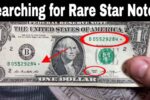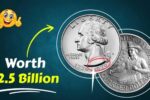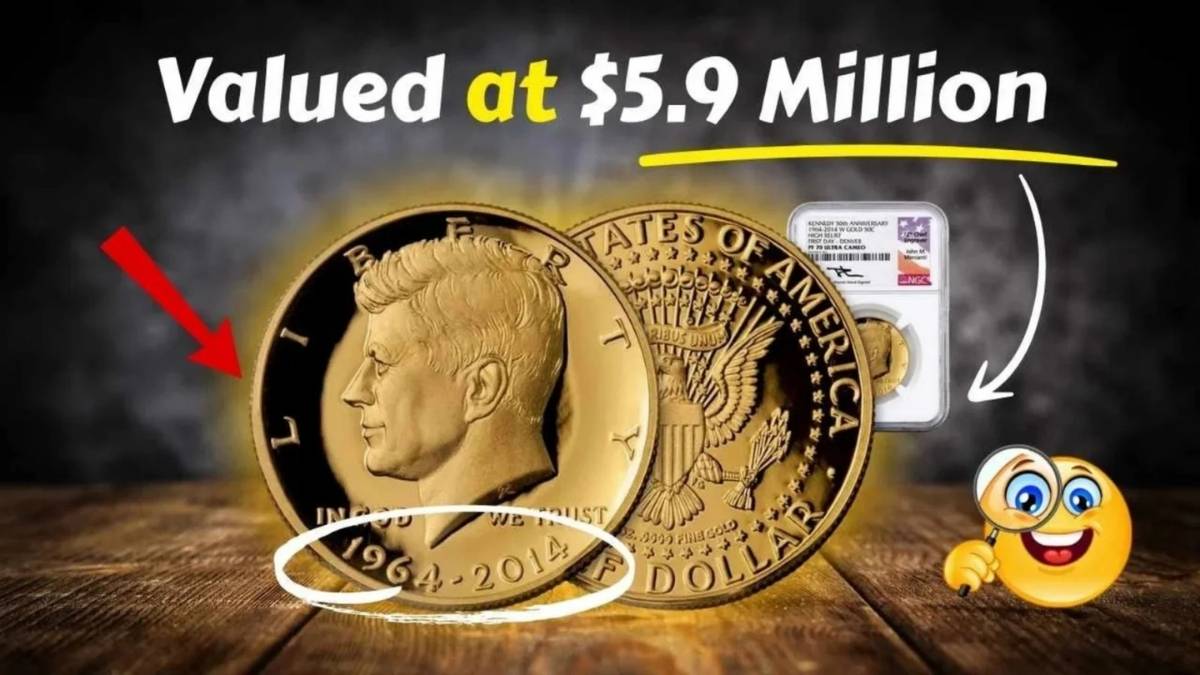There’s something fascinating about coins that tell a story beyond their face value. Among the most talked-about pieces in the numismatic world is the Bicentennial Quarter, a coin that marked America’s 200th year of independence. While millions of these quarters were made in 1976, one rare variant has caught the attention of collectors and historians alike rumored to be worth a staggering $2.23 million. But what makes this small piece of metal so extraordinary? Let’s take a closer look at the story behind it and the factors that make it a true gem in the world of coin collecting.
The History Behind the Bicentennial Quarter
In 1976, the United States Mint decided to celebrate the country’s bicentennial with a special coin series. The quarter, half dollar, and dollar all received commemorative designs reflecting America’s journey since 1776. The quarter featured a drummer boy on the reverse side, created by artist Jack L. Ahr, while the front displayed a dual date 1776–1976 below George Washington’s portrait.
These coins were meant to symbolize freedom, history, and national pride. Most of them were minted in large quantities for circulation, which makes the average Bicentennial Quarter worth only 25 cents even today. However, a few unique pieces produced under special circumstances became prized collectibles.
What Makes One Quarter Worth Millions?
Not every Bicentennial Quarter holds great value, but certain rare types can command astonishing prices. The $2.23 million figure isn’t about hype alone it’s tied to a combination of rarity, condition, and minting errors that make one coin truly one-of-a-kind.
1. Rare Composition and Minting Variations
Most Bicentennial quarters are made of a copper-nickel blend, but a limited number were struck in 40 percent silver, primarily at the San Francisco Mint. These silver coins were not meant for regular circulation—they were part of collector sets. A small error during production, such as using the wrong metal planchet or producing a silver coin at a different mint, can turn an ordinary piece into something exceptional.
If a Bicentennial Quarter was struck on a silver planchet by mistake, especially at a non-San Francisco mint, that alone could make it worth a fortune.
2. Perfect Condition
Coin collectors, or numismatists, value coins based on their grade a measure of how well-preserved the coin is. A Bicentennial Quarter in pristine, uncirculated condition is rare, particularly if it has never been handled or spent. When such a coin is professionally graded by organizations like PCGS or NGC and receives a perfect or near-perfect score, its value skyrockets.
A flawless silver Bicentennial Quarter with unique minting traits and a perfect grade could easily attract bids in the millions from passionate collectors.
3. Historical Appeal
The quarter isn’t just valuable because it’s rare it represents a piece of American history. It captures the spirit of the country’s 200-year journey, symbolizing liberty and unity. For collectors who value the story behind the coin as much as its rarity, the Bicentennial Quarter carries emotional weight as well as historical importance.
The Legend of the $2.23 Million Quarter
The talk of a Bicentennial Quarter being worth $2.23 million spread across the internet after reports surfaced of a private sale involving a rare variant with near-perfect features. While such figures are difficult to verify publicly, the claim highlights the intense fascination surrounding coin errors and rare finds. In numismatics, a unique specimen can sometimes sell for an amount that seems unbelievable to the casual observer.
Even if this particular sale remains more of a legend than a confirmed record, it points to one truth: rare coins can indeed fetch life-changing amounts when the right combination of rarity, history, and demand come together.
How to Tell if You Have a Rare Bicentennial Quarter
Finding a rare coin can feel like discovering buried treasure. While most Bicentennial quarters are ordinary, here are a few signs that yours might be special.
- Check the mint mark. Look near Washington’s ponytail on the front of the coin. A “D” means it was made in Denver, “S” in San Francisco, and no letter indicates Philadelphia. Rare variants might have missing or unusual marks.
- Examine the metal. Silver coins have a distinctive look and slightly heavier weight than standard copper-nickel quarters.
- Inspect for errors. Off-center strikes, double-die errors, or unusual color patterns could increase value.
- Look at the condition. If your coin looks almost untouched, it’s worth getting it appraised.
If you suspect your coin is rare, don’t clean it or polish it this can reduce its value. Instead, take it to a professional coin dealer or grading service for evaluation.
Why Some Bicentennial Quarters Are Still Worth Collecting
Even if you don’t have the million-dollar version, Bicentennial quarters are still beloved among collectors. Their unique design, historical meaning, and nostalgic value make them wonderful keepsakes. Many people enjoy collecting different mint marks or uncirculated versions as part of their personal hobby.
Owning one connects you to a moment in American history when the nation celebrated its 200th birthday with pride and creativity. It’s not just about money it’s about preserving a story that has touched generations.
The Realistic Value Range
While only a tiny handful of Bicentennial Quarters could ever be worth millions, certain high-quality examples can still sell for hundreds or even thousands of dollars. A silver proof coin in perfect condition might bring in anywhere from $50 to $500 depending on the market, and error coins can go for much more.
As with any collectible, the coin’s worth depends on what buyers are willing to pay. Auctions and private sales can sometimes lead to astonishing results, especially when passionate collectors compete for ownership.
The Beauty of Coin Collecting
Coin collecting is about more than profit it’s about curiosity, history, and craftsmanship. Every coin tells a story about the era it came from, the people who made it, and the nation it represents. The Bicentennial Quarter stands out because it combines artistry, symbolism, and a touch of mystery.
Whether or not the $2.23 million story is entirely true, it has inspired countless people to look more closely at the change in their pockets and rediscover the beauty of American coinage.
Final Thoughts
The rare Bicentennial Quarter valued at $2.23 million may be a legend, a once-in-a-lifetime error, or a real piece of numismatic history. What’s certain is that it reminds us how something small can hold incredible value both financially and historically.
If you ever come across a Bicentennial Quarter, take a closer look. You might not have a multi-million-dollar treasure, but you’ll still hold a small piece of America’s past one that continues to capture hearts and imaginations nearly fifty years later.
FAQs About the Rare Bicentennial Quarter
1. What makes the Bicentennial Quarter special?
It was minted to celebrate America’s 200th anniversary in 1976 and features a unique design with a drummer boy and dual date.
2. How can a Bicentennial Quarter be worth millions?
Rare variants, like those made of silver or with minting errors, can be worth millions, especially in perfect condition.
3. What should I look for to determine if my Bicentennial Quarter is valuable?
Check for the mint mark, metal composition (silver), and any visible errors or unusual features.
